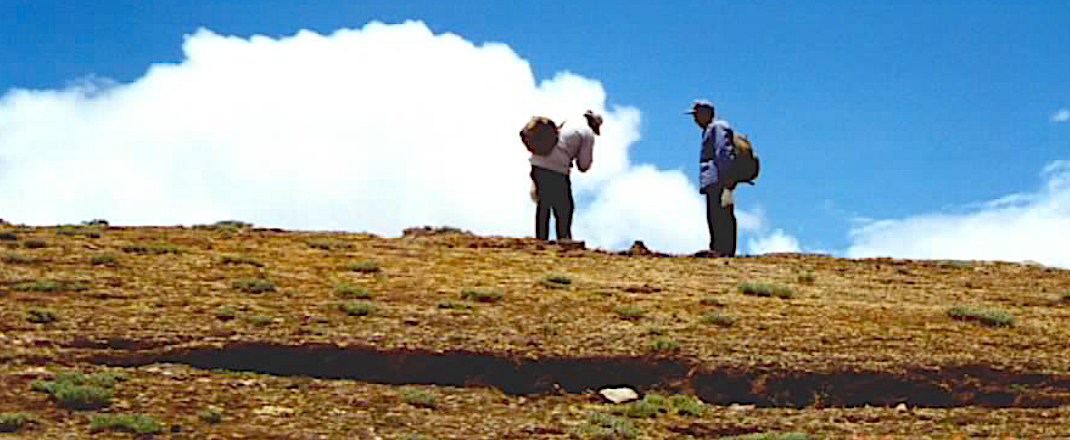Padana Fm
Type Locality and Naming
South Lhasa Block - Xigaze forearc Basin. The section for the designation is at the Padanagou about 4 km southeast of Sangsang of the Ngamring County, Xizang. The reference section is at Cuojiangding of Qiongguo township of the Zhongba County, Xizang (84°21′E; 29°56′N). The Padana Formation was erected by Yin Jixiang et al in 1988.
[Figure: Type section of Padana Formation in Padanagou of Ngamring County, Xizang (Tibet)]
Lithology and Thickness
The Padana Formation is represented by gray, gray green and purple red sandstone, sandy mudstone and marl, which are divided into three members. Lower member – lower part is built up by gray medium-bedded calcareous fine-grained sandstone forming rhythms with thin-bedded siltstone, bioclastic limestone and calcareous shale, while the upper part gray fine sandstone and calcareous sandstone with thin-bedded siltstone and thin-bedded clayey fine sandstone and gray green medium and thin-bedded clayey fine sands, bearing abundant bivalves Pholadomya (Pho.) cf. fabianas, Cyprimeria alaloga, Camptonectes (C.) virgatus, Parvamyasium cf. sulcatellum, etc.; gastropods Alaria acicularis, Latirus reussianus, Cythara cretacea, Haustataor turriformis, etc. Middle member is represented by gray and gray green sandstone, fine sandstone and gravel-bearing lithic feldspar grit interbedded with purple red siltstone, with multiple sandy conglomerate, thin-bedded granule conglomerate, sandy marl, bearing bivalve and plant debris, for example Astate sp. It is 48.77 m thick. Upper member is represented by purple red siltstone with gray yellow sandy mudstone, purple red and gray purple fine sandstone with gray green siltstone, shell limestone and gray yellow bioclastic sandstone, and purple red sandy marl intercalated with gray green calcareous siltstone, gray purple sandstone and shell limestone lenses, being 216.54 m in thickness.
Relationships and Distribution
Lower contact
The base of the formation marked by calcareous fine-grained sandstone lies conformably on the rhythms of sandstone and shale of the Ngamring Fm.
Upper contact
The top of the formation is not observed in the Sangsang area of Ngamring County and lies conformably under the Qubeiya Fm in Cuojiangding of the Zhongba County.
Regional extent
The present formation occurs extensively in Padanagou of Sangsang of the Ngamring County (more than 617 m thick), Cuojiangding of the Zhongba County (733 m), Dazhuka of Xigaze (more than 370 m thick), and Zagongriar-Bamaogou southeast of the Gangrenpoqi Peak (100-2000 m thick). It is persistent in lithology. In the Dazhuka area, only the lower part of the formation is exposed, consisting of light gray metamorphosed sandstone and fine sandstone with phyllite.
GeoJSON
Fossils
The formation bears bivalves Plagiostoma sp., Placunopsis sp., Caestocorbula (Parmicerbula) cf. elegans, Lima sp., etc.
Age
Depositional setting
Additional Information
